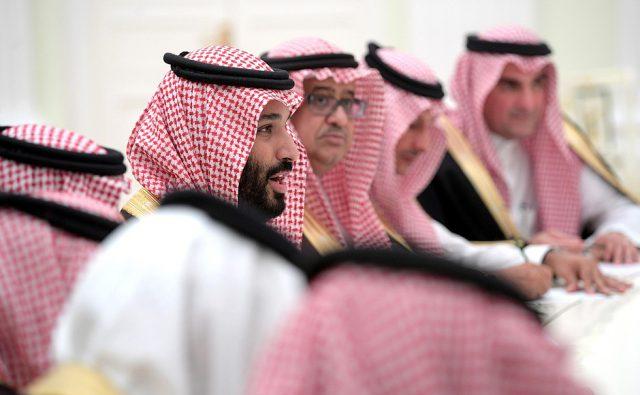
The Islamic State’s (IS) caliphate project had mostly collapsed by the end of 2017. Even so, terrorism and counterterrorism (CT) in the Middle East were still driven by the fight against IS, a resurgent al-Qaeda and the conflict in Syria. Syria has not only driven jihadist conflict and dynamics, but has become a battleground in which all sorts of regional and international ambitions and conflicts are being played out.
The spectre of jihad is far from over. Islamic terrorism in the Middle East has an ourboros quality to it—a beast continually feeding upon itself. The threat remains because there are many structural factors driving jihadism in the Middle East that have no easy solutions—poor governance and the lack of legitimacy for many states and governments in the region, ultra conservative and militant ideologies that resonate, youth unemployment, civil conflict, and virulent and growing sectarianism, to name only a few. In 2017 a number of developments both pushed back against and fed into those dynamics.
For example, Saudi Arabia, the region’s most proactive player in 2017, had begun to push back against its Wahhabi legacy, a religious strain that influenced modern jihadist ideology. Saudi’s de facto ruler, Crown Prince Mohammed bin Salman (MBS), has taken a clearer and stronger stand against radical ideologies. In effect, MBS challenged the alliance between the Wahhabi clerical establishment and the house of Saud, an alliance that has defined the kingdom since its founding.
It was a significant political, cultural and CT development that the kingdom has at long last recognised the ideological elements that drive violent radicalism in the region. However, Saudi Arabia’s continuing military operations in Yemen, its role in fomenting the Qatar crisis and the disintegration of the Gulf Cooperation Council (GCC) and its stoking of sectarianism through regional proxy conflicts with Iran continue to feed the jihadist threat.
Lebanon, Syria’s closest neighbour, remained strongly affected by both the civil conflict in Syria and the overlaying regional dynamics. In 2017 it was caught up in the interventionist manoeuvres of Saudi Arabia, which most obviously manifested themselves in the Lebanese prime minister’s bizarre but short-lived detention and resignation on Saudi orders in a desperate attempt to curb Hezbollah–Iranian influence in Lebanon.
Lebanon made significant CT contributions in the fight against many jihadist groups operating in the region. Many Lebanese security institutions had notable successes in 2017 despite the fact that Lebanon lacks a fully functioning government and must contend with Hezbollah’s authority and influence.
But the Lebanese government still doesn’t have a monopoly on the use of force and Hezbollah remains a strong parallel government and paramilitary that controls parts of the country. So while the Lebanese government and security services had successes in 2017, Hezbollah and its Iranian backers came out of 2017 in a stronger strategic position, with more battle experience and with access to better weaponry.
Terrorism financing was another CT focus in 2017, but one that was also politically manipulated to drive a wedge in the GCC and consolidate Saudi Arabia’s regional dominance. In June 2017, Bahrain, the UAE, Jordan, Egypt, Yemen and Saudi Arabia cut diplomatic ties with Qatar and placed an embargo on the country, precipitating the ‘Qatar crisis’. Ostensibly the countries imposed the embargo due to Qatar’s terrorism financing and support of the Muslim Brotherhood. In reality it was due to long-simmering tensions over Qatar’s foreign policy double dealing, its embrace of the Muslim Brotherhood and its engagement with Iran. However, by isolating Qatar the others have promoted growing sectarianism and put the fate of the GCC in jeopardy. Both of those broader trends feed into the terrorist threat.
The rise and fall of IS has largely defined terrorism and insurgency in the Middle East for the past half-decade and this past year was no different. It’s hard to believe that it has been that long since IS formally declared itself in Iraq in April 2013. Though it no longer officially governed much territory, IS remained a powerful insurgent/terrorist force in 2017, and will continue to be so for the foreseeable future.
Yemen remained a strong base of operations for AQAP, which was, according to a 2017 Crisis Group report, ‘thriving in an environment of state collapse, growing sectarianism, shifting alliances, security vacuums and a burgeoning war economy’. The conflict in Yemen and other countries in the Middle East and North Africa have led to this resurgence.
Al-Qaeda (AQ) also remains a persistent presence in the region, and is resurgent. In 2017 AQ could boast some 40,000 fighters around the world. Current estimates are that roughly 3,000 IS fighters remain in Syria and Iraq, about three times as many were operating in 2009 when al-Qaeda in Iraq re-emerged to form what became IS.
According to the US spokesman for the military coalition fighting IS, IS fighters have already begun to claw back some territory in Syria and are conducting attacks at a rapid clip in Iraq and elsewhere. IS, AQ and other jihadist groups aren’t going anywhere anytime soon. Counterterrorism, wrapped up as it is in the region’s broader structural problems, will remain a challenge for years—if not decades—to come.